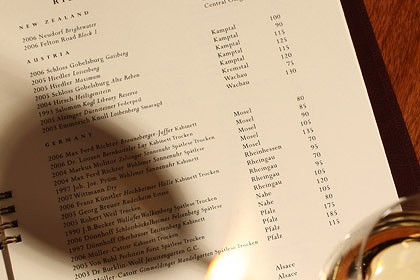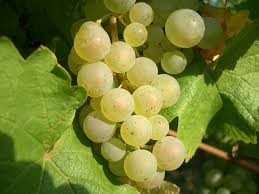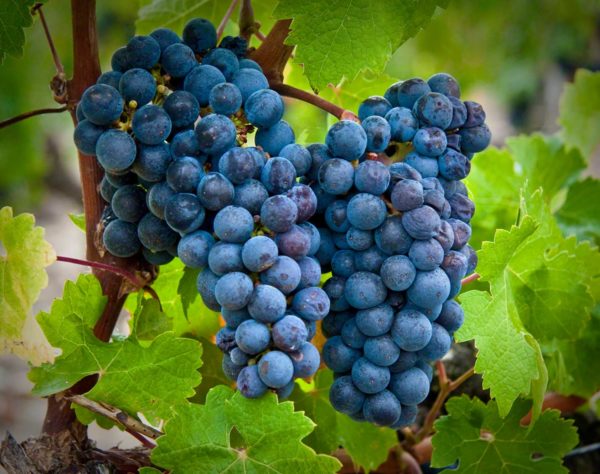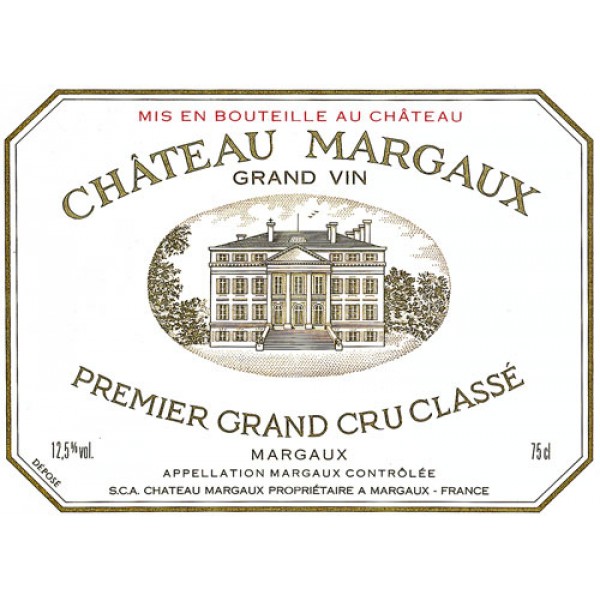Wine: An Overview/Restaurant Ordering
posted by Colton on 11th September 2016, at 2:39am | Discuss ArticleOk, so this title may be fairly specific, but through this article, I aim to provide a basic working knowledge of wine in several useful aspects: why you need to know about it, basic terminology, and how to order confidently in a restaurant setting. Wine, to many people, seems complicated, mystifying, and unknowable. They feel that they can’t possibly order a bottle of wine with confidence without investing hours and hours of time studying all there is to know. Although wine is certainly a rabbit hole for those that seek to study its depth and intricacies, these preconceptions are far from the truth for 99.9% of consumers. Here, I primarily seek to make you capable of ordering a bottle of wine at a restaurant. Buying wine for storage, tasting and describing wine, and other details will have to be left for another time for the sake of brevity. On to the intoxicants!
But, Why?
Firstly, wine is everywhere in the world of business. Anytime you’re doing an interview or taking a meeting at a restaurant, wine is a question. Being confident about what you want to drink is impressive. Second, it’s a great conversation piece. Wine is a social drink, it’s meant to be enjoyed and discussed with others! Keeping this short and sweet, my final point is that wine is just plain fun. There’s seriously something for everyone out there and it’s more affordable than you might think. Give it a try, and I’m sure you won’t regret it.

Practical Parlance
Here are a few terms that pop up constantly with wine that should help simplify descriptions:
Dry vs. Sweet: A dry wine is a wine that has fermented such that all of the grape sugars have been converted to alcohol and thus does not have any perceptible sweetness on the tongue.
Vintage: This refers to the year the fruit was picked and fermentation began. Some years are hot, cold, rainy, dry, etc., but it’s not necessary to know the difference.
Varietal: A varietal wine is a wine that is only made from one type of grape, not blended
Sparkling: Any wine with bubbles is sparkling
Champagne vs. Others: Champagne is made from the Champagne region of France by a particular method; others like Cava, Prosecco, Cremant are not Champagne, they are strictly “sparkling” wines
Fortified: These wines have been fortified by adding another spirit, usually brandy
Rosé: Pink wine! (Usually made from red grapes but fermented off of skins to prevent color extraction)
Body: The body of a wine refers to the thickness and viscosity it gives in the mouth (thicker=full-bodied, thinner=light-bodied)
New vs. Old World: New World is wine made anywhere outside of Europe, the Old World
Tannin: Compound present in grape seeds/skins/stems, found mostly in red wines, provides a mouth-drying sensation akin to drinking over-steeped tea
Wine 101
Wine sold in stores and in restaurants can be made from thousands of grape varieties, but there are only 8-12 that will show up almost everywhere you go. Here they are and what you should know about them:
White Grapes
Riesling: often sweet, light wine with aromas ranging from peach and apricot to lemon and green apple
Pinot Gris/Grigio: dry and light, citrus notes
Sauvignon Blanc: medium-bodied dry wine with some herbal, sometimes even grassy aromas
Chardonnay: fuller-bodied dry wine which from the New World is often full and creamy, whereas it will likely be more crisp and elegant from the Old World

Red Grapes
Zinfandel: Medium-bodied dry red, fresh red berries and strawberries with cinnamon and baking spice notes
Merlot: Soft, dry red with black cherry and raspberry predominating
Pinot Noir: light and dry, with primary aromas of strawberry/cherry with some earthy notes
Syrah/Shiraz: Medium-bodied dry red with black and blueberries on top of leather and pepper
Cabernet Sauvignon: Full-bodied dry red, black and red fruits with plenty of tannins

Important Blend Names/Styles
Bordeaux: Bordeaux is a popular region in France frequently seen on menus. A Bordeaux red is often a blend of mainly Cabernet Sauvignon and Merlot (with a few others that play smaller roles). This is a good staple if you want a nice red to go with a piece of red meat.
Côtes-du-Rhône: Although less popular in comparison to Bordeaux, another French red blend that is frequently seen on wine lists. These reds are primarily Syrah with Grenache and Mourvedre and are slightly more gamy and animalistic in comparison to a more refined, softer, fruitier style that Bordeaux often fits into.
Burgundy/Bourgogne: Another French region, this area produces a white made almost exclusively of Chardonnay (Bourgogne Blanc) and a red made from Pinot Noir (Bourgogne Rouge)

Basic Pairing
Now that you know some grape varieties and important blends that will show up on menus all over, hopefully you’re ready to tentatively try something out, and the best way to do that is with food. Wine is a drink made to be consumed alongside a meal, but not every wine fits with every food. For example, dry wines don’t go well (for the most part) with sweets. Neither does a bitter wine go with bitter green veggies, nor a creamy wine with a tart lemon dish. Wines should be sweeter (in the case of dessert) and more acidic than their paired dish, while also avoiding a tannic, bitter red alongside bitter foods as these will only multiply the bitter flavors. Below are some very basic, by the book pairings with common restaurant fare that won’t let you down. (Note: these are by no means all that will pair with foods, but they are purely meant as guidelines to help get you thinking in the right direction)
Steak/Red Meat Cuts: Cabernet Sauvignon, Merlot, Zinfandel, Bordeaux blends
Chicken: Chardonnay, Pinot Noir, Merlot
Shellfish: Chardonnay, Pinot Noir
Fish: Dry Riesling, Sauvignon Blanc, Pinot Gris, Champagne
Veggies: Sauvignon Blanc, Pinot Grigio, Prosecco
Cheese: Riesling, Champagne, Cava, Fortified Wines (i.e. Sherry, Port)
Meat-and-Cheese Sandwich: Zinfandel, Merlot
Pasta with Cream Sauce: Chardonnay, Champagne
The most important thing to do when pairing is to try different combinations. Some traditional pairings may not work for you personally, whereas some rather unconventional ones may taste crazy good. There’s no exact science to any of this, it’s just useful to keep in mind conventional pairing wisdom as a form of guidelines.
How much?
Wine can get expensive, but it doesn’t have to. Bottles ordered at a restaurant are usually marked up 250-300% of their retail value, but most wines around the $10-20 USD mark are usually quite good. If you’re looking for something that will be pleasant but won’t break the bank, expect to spend $50 on a bottle at a restaurant, and $10-15 if you’re purchasing it by the glass. Of course, this varies widely by region popularity, grapes involved, and many other things that influence cost. However, this is once again just a guideline to go by. For less experienced tasters, it probably won’t be worth it to purchase that $300 bottle of Chateau Lynch-Bages from 1991 because it usually takes a basic knowledge of tasting and a few more nuanced aspects of the wine experience to properly appreciate that bottle when compared to a $20 bottle of Napa Valley Cabernet.

Concluding
All of this is to say that the experience of buying and drinking wine (especially with food) is a deeply personal experience. So much of it is subjective but armed with some basic knowledge of what you like, why you like it, and what it goes with, wine can be nothing short of magic. My best advice for this entire article could be simply to go out and try. Buy a bottle and pair it with what you’re having that night. Did the combination of flavors taste good? If they didn’t, try and find out why and learn from that experience. Wine is by no means snooty, stuffy, or above it all. It’s just fermented grape juice, but at the same time, it has the capacity to bring joy and laughter to the table as it has for millennia. So pour yourself a glass, and get lost in it.


